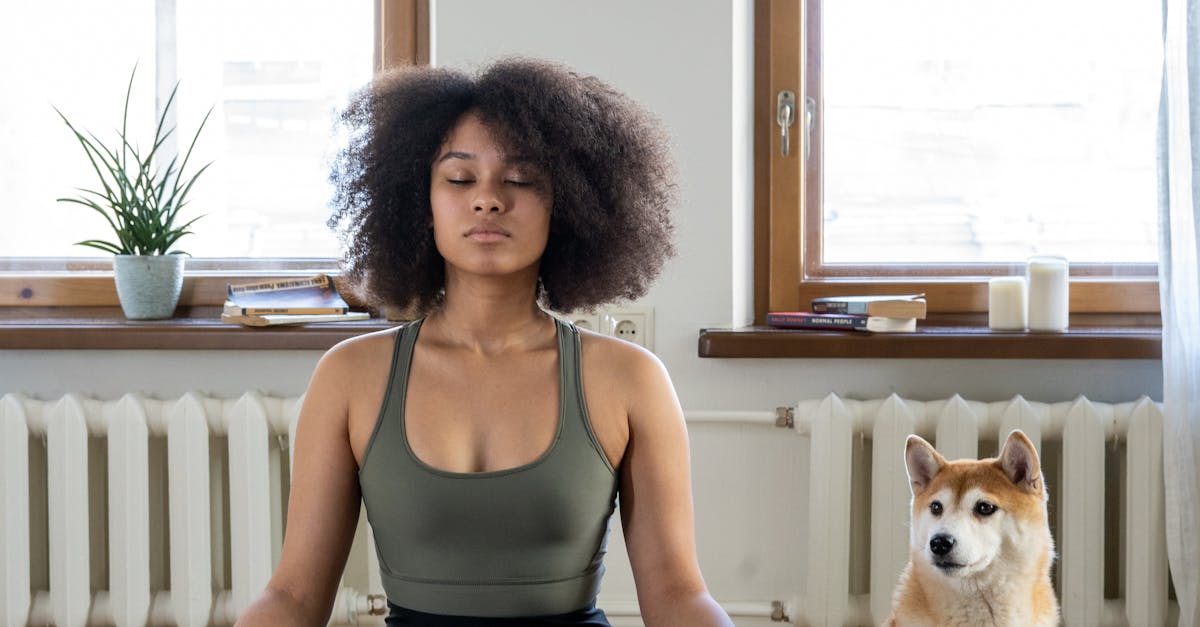How do I start a mindfulness session?

Incorporating Breathing Techniques
Breathing techniques serve as a cornerstone for initiating mindfulness sessions. These practices help ground individuals in the present moment and can effectively alleviate tension. Focusing on one's breath facilitates a deeper connection between the mind and body. This awareness cultivates an atmosphere conducive to relaxation, making it simpler to engage in further mindfulness techniques.
Various exercises can be employed to enhance breathing awareness. One common method involves deep abdominal breathing, which encourages full oxygen exchange and prompts a relaxation response. Additionally, individuals may practice the counting of breaths to create a rhythm that assists in maintaining focus. Such techniques not only enhance the mindfulness experience but also promote a sense of well-being and clarity.
Their blog is a great resource for information.
Effective Breathing Exercises to Begin With
Starting with simple breathing exercises can significantly enhance your mindfulness experience. One effective technique is the 4-7-8 breathing method. You inhale quietly through your nose for a count of four, hold your breath for a count of seven, and then exhale completely through your mouth for a count of eight. This exercise not only calms the mind but also promotes relaxation by reducing stress and anxiety.
Another valuable practice is diaphragmatic breathing, also known as belly breathing. In this exercise, you can lie down or sit comfortably, placing one hand on your chest and the other on your abdomen. As you inhale deeply through your nose, focus on allowing your abdomen to rise while keeping your chest as still as possible. Exhaling slowly through your mouth, feel your abdomen fall. This method fosters a deeper connection to your breath and encourages mindfulness throughout your day.
Guided vs. SelfGuided Sessions
Many individuals find value in guided mindfulness sessions, especially when starting out. These sessions often provide structured instructions, making it easier to focus and engage with the practice. Voice guidance can help maintain mindfulness and prevent the mind from wandering, offering a supportive presence that encourages deeper exploration of thoughts and feelings.
On the other hand, self-guided sessions appeal to those who prefer autonomy in their mindfulness practice. They allow for personal flexibility in duration, timing, and techniques used. This approach can foster a sense of independence and self-discovery, enabling practitioners to tailor their sessions to suit individual needs. Each method has its unique advantages, catering to different preferences and experiences.
Pros and Cons of Each Approach
Guided mindfulness sessions provide structure and support, making them particularly beneficial for beginners. Having an instructor can enhance focus, as they offer cues and reminders to stay present. Guided sessions often come with a variety of themes, catering to different emotional needs and goals. However, relying on an external guide may diminish self-reliance over time, leading to a lack of confidence in practicing independently.
On the other hand, self-guided sessions foster independence and flexibility, allowing practitioners to explore their own preferences and styles. This approach encourages deeper self-reflection and personal growth, as individuals learn to navigate their thoughts and feelings without external influence. Yet, without a structured framework, some may find it challenging to maintain focus or may feel lost without direction. Balancing both approaches can help create a well-rounded mindfulness practice.
Utilizing Mindfulness Tools
Mindfulness tools have gained popularity for their ability to enhance practice. Various apps, websites, and accessories offer resources for individuals seeking guidance and structure in their sessions. Apps like Headspace and Calm provide curated exercises that cater to different experience levels. They also feature options such as sleep sounds and nature visuals, helping users create an immersive mindfulness experience.
In addition to digital resources, physical tools can serve as powerful aids in mindfulness practice. Items like meditation cushions, singing bowls, or even simple timers can encourage a routine. Visual reminders, such as mindful quotes or art, can help anchor a daily practice. Incorporating these tools into a mindfulness routine may foster deeper engagement and consistency over time.
Popular Apps and Resources for Guidance
Various mobile applications offer structured mindfulness programs tailored to different needs and preferences. Some well-known apps provide guided meditations, breathing exercises, and reminders to practice throughout the day. These tools often come with customizable features, allowing users to track their progress and select sessions based on time constraints or specific goals.
Online platforms also host resources such as video tutorials, articles, and podcasts dedicated to mindfulness practices. Many websites provide access to free materials, while others offer subscriptions for more comprehensive content. Users can explore diverse techniques and teachings from experienced practitioners, which can enhance their understanding and deepen their mindfulness journey.
FAQS
What is the best way to start a mindfulness session?
The best way to start a mindfulness session is by finding a quiet space, sitting comfortably, and beginning with some deep breathing exercises to ground yourself.
How long should I meditate during my mindfulness session?
For beginners, starting with 5 to 10 minutes is effective. As you become more comfortable, you can gradually increase the duration to 20 minutes or longer.
Are guided mindfulness sessions better than self-guided ones?
It depends on personal preference. Guided sessions can be beneficial for beginners who need direction, while self-guided sessions may appeal to those who prefer a more personalized approach.
What mindfulness tools can I use to enhance my practice?
You can use mindfulness apps, meditation cushions, journals, or even calming music to enhance your practice. Popular apps like Headspace and Calm provide guided sessions and resources.
Can I practice mindfulness anywhere, or do I need a specific environment?
You can practice mindfulness anywhere! While a quiet and comfortable environment can enhance your session, mindfulness can be practiced in various settings, such as at work or during a walk.
Related Links
What is the first step to mindfulness?How do I know if I'm meditating correctly?
How A Mental Health Clinic In The Bronx Is Empowering Individuals With The Help Of Psychologists